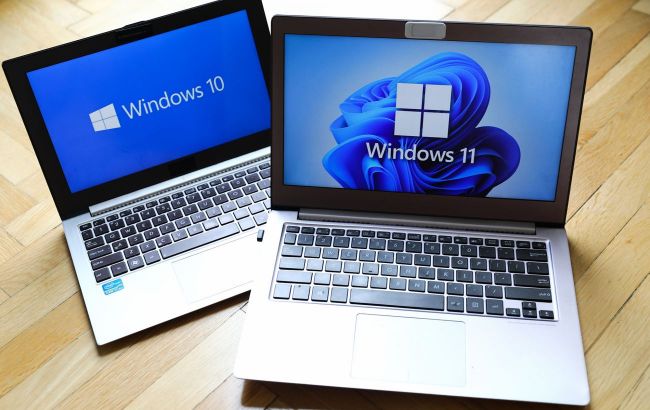Top 6 things to do right after buying new PC
 Things to do right after buying new PC (photo: Getty Images)
Things to do right after buying new PC (photo: Getty Images)
Before you dive into your new PC, it's important to prepare your device for safe and stable operation. New PCs often require additional customization and uninstallation of unnecessary software to ensure maximum performance and data protection, states PCWorld.
Run Windows Update on your new computer
The first step may seem the most tedious. Don't go online unless your version of Windows is fully updated and protected with the latest patches - this is an important rule of thumb.
Depending on how long your computer has been sitting on the store shelf, it may take a few minutes or a few hours to update. But this process must be completed.
Microsoft releases Windows updates at least once a month. Previously, major updates for Windows 10 and 11 were released twice a year, but now they are released once a year, with some new features added throughout the year. If your computer is not up to date, you may miss important security fixes and useful features.
First, make sure your computer is connected to the internet. In Windows 10, open the Start menu and go to Settings, Update and security, Check for updates. The system will start searching for available updates. Download and install them, then restart your computer and repeat the process several times until the system stops finding new updates.
Ideally, this process will take little time, but in the worst case scenario, it can take an hour or more to update a new computer.
The good news is that in the future, Windows will automatically download and install updates as they are released. You just need to get through this first phase.

Keep updating Windows until you see a message that everything is up to date (photo: PCWorld)
Install your favorite browser
Users who don't like Microsoft Edge can use Chrome, Firefox, or Opera.
For a long time, Chrome has been the main recommended browser, but today Edge is considered one of the best options for surfing the web, especially for those who are open to new solutions.
In addition, Edge is installed by default in the Windows operating system.
For those who want to explore other options, you should check out our articles on the benefits of Firefox, Vivaldi, Edge, and Opera to help you choose the most suitable browser.
Configure the security of your new PC
Now that you've made the initial settings, it's time to take care of security.
In most cases, Windows comes with Windows Security turned on, unless your laptop or desktop comes with a pre-installed trial version of a third-party antivirus.
Windows Security is a simple and reliable anti-malware solution that is suitable for most users. It is good at detecting threats, but doesn't offer many additional features.
However, this security system is not the most functional. For example, you can't set up a scan schedule, and Windows Security doesn't protect against online threats such as phishing.

Customize the security of your new PC (photo: PCWorld)
Clean your computer of unnecessary software
Now that you have your security set up, it's time to rid your PC of any unnecessary junk.
You can skip this step if you built your computer with a clean Windows installation. Regular versions of Windows don't contain any unnecessary software, as do custom builds from manufacturers like Falcon Northwest Fragbox. However, off-the-shelf devices from well-known brands are almost always overloaded with unnecessary programs.
The easiest way to get rid of unnecessary programs is to type “Add or remove programs” in the Windows search bar, and then select the appropriate item in the search results. Review the list of installed applications and remove any unnecessary programs.
Don't uninstall programs from your hardware manufacturer. For example, software from Intel, AMD, Nvidia, Microsoft, HP, or Lenovo is worth keeping. But anything that comes pre-installed, such as trial versions of antivirus, Dropbox, Candy Crush, Netflix, Spotify, or App Collections, can be safely removed.
If you decide to do a clean install of Windows and want to keep some programs (such as Office), don't forget to write down the serial numbers in advance. To do this, you can use programs like Belarc Advisor to get the product key.
For most users, however, it's enough to just go through the list of installed applications and uninstall the main ones you don't need.

Clean your computer of unnecessary programs (photo: PCWorld)
Back up your new computer
Now your PC is finally ready to go: it's secure, up to date, free of unnecessary software, and customized for your needs. But there's still one more important step to take.
Now that your computer is in tip-top shape, it's time to make a cloned copy or image of the hard drive that Windows boots from and save it to another drive.
This will create a “snapshot” of your disk that you can use to boot Windows if your primary drive fails. Having such a copy in an up-to-date, updated state without any unnecessary software will save you from having to do all this setup again when you reinstall Windows.
What's the difference between a clone and an image
A clone is an exact copy of your hard disk on another drive, including files and a boot record. It takes up the entire second disk, but you can use it right away by simply plugging it into your computer.
An image is a huge file containing all the data from your PC. After a crash, an image-based system is more difficult to recover from than a clone, but an image is more flexible in storage because it's just a big file that can be placed anywhere.
Update the drivers on the new computer
This step is optional and not for everyone. Incorrect drivers can cause problems, so if your computer works fine out of the box and you use it for basic tasks like searching the Internet or working in Office, feel free to skip this step. Windows Update has already installed the necessary drivers for your hardware.
However, if you've built your PC yourself or are using a gaming computer, it's better to check for newer versions of drivers. Windows Update may not always install the latest drivers. Newer versions of drivers for your motherboard or Wi-Fi module can improve performance and add useful features.
For gamers, it's especially important to keep their video card drivers up to date for optimal performance with new games. Fortunately, this is easy to do with the help of official Nvidia or AMD apps that notify you when new versions are released.

Drivers (photo: PCWorld)

